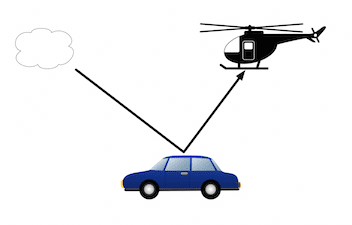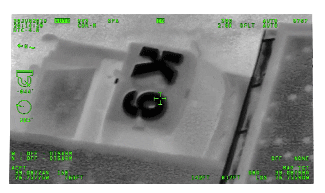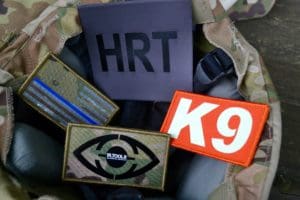Vehicle Markers use infrared science* to help Airborne Law Enforcement clearly identify vehicles through its thermal imager.
-40℃ and -40℉ are the same temperature… COLD!
The higher we go up in the sky, the lower the temperature becomes. If you measure the sky temperature from the ground on a clear day, it will be about -40 ℃ AND -40 ℉. This is the one temperature where celcius and fahrenheit are the same. But call it what you want, it’s cold!
Vehicle Markers reflect thermal energy the same way a mirror reflects light.
When the airborne personnel looks down on the vehicle, the Vehicle Markers on top of the vehicle reflect the temperature of the cold sky, and appear to be the same temperature as the sky (very cold and black). But the area of the vehicle around the numbers does not reflect the temperature of the cold sky and appears to be warmer (white to gray). This apparent temperature difference shows up to the camera as shown below.
For more information about marking your vehicles using thermal imaging markers call us at 443.292.8885.
Free samples available to qualifying inquires.
* Every object above the absolute zero temperature (O K) emits infrared radiation. The amount of radiation emitted by objects increases with temperature. The way to measure thermal variations is to use an infrared camera capable of detecting the different radiation amount in the mid (3 to 5um) and long (7 to 14um) wave infrared bands.
The Author
 Tom established IR.Tools™ in 2006, working out of his home for several years before growing into an official office space in 2012. As a veteran and engineer, Tom was led down a path to manufacturer quality infrared markers, insignia and targets for the military and law enforcement. An innovator who is always moving forward to stay ahead of the industry, Tom has 15 awarded patents, and 10 patents pending. Tom received his BS and MS in Mechanical Engineering from the University of Maryland, College Park and his MBA from Regents University.
Tom established IR.Tools™ in 2006, working out of his home for several years before growing into an official office space in 2012. As a veteran and engineer, Tom was led down a path to manufacturer quality infrared markers, insignia and targets for the military and law enforcement. An innovator who is always moving forward to stay ahead of the industry, Tom has 15 awarded patents, and 10 patents pending. Tom received his BS and MS in Mechanical Engineering from the University of Maryland, College Park and his MBA from Regents University.


